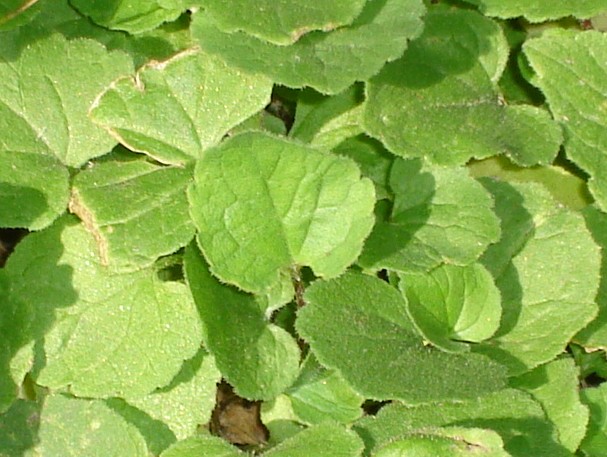That very pretty purple bell flower blooming in our gardens and alleys is Creeping Bellflower (CFB). This hardy perennial is very aggressive, invasive, and very, very difficult to eradicate which makes it a noxious weed here in Calgary. Left to grow, the plants will choke out all your other plants, even quack grass. The seeds are prolific: about 15,000 per stalk, and they have an amazing germination rate. If you do nothing else this season, cut the stalks before they go to seed, especially plants growing in the alley!
Creeping bellflower spreads several ways: creepers, tap root, and seed. If you pull the plant up, you will see some white creepers and think that these are the roots. No, there is a tap root as well and just pulling off the top of the plant signals the tap root to send out a lot more creepers before it sends out more leaves. Sneaky! Don’t be fooled by first year leaves which are rounded and look like a western violet. It doesn’t produce the 24” to 30” stalk and flowers until the second year when the leaves change from heart shape to arrow shape with serrated edges. That first year, the plant is growing its tap root and sending out creepers long before the leaves appear. Each one of those creepers can produce a new plant and they will travel far! Any bit of creeper or root you break off will grow!
So how to get rid of it? The only non-chemical way to deal with CFB is dig it up by hand! Be careful to get all the roots and don’t leave anything behind. Bag everything and throw it in the garbage. Do not compost or mulch! Check often for new plants and dig them up immediately. It will take a few years to totally eradicate CFB, but it can be done. For small patches in the lawn, keep trimming it back to the soil level. This will contain it but won’t get rid of it. Some gardeners will suggest smothering a large area of CBF for a year or two. This doesn’t work well because it will go dormant and grow again once it has light and water.
Even though I don’t use herbicides or pesticides, I make an exception for creeping bell flower. The only thing that works for me is concentrated Round-Up diluted 5:1 or 10:1 instead of the recommended 20:1. It requires very careful and selective application because it kills everything it touches. Don’t get this on your skin! I use gloves and a paper towel or cotton balls dipped in the mixture which I can dry and reuse. Even so, it will likely take more than one application. A large area can be sprayed. Dig up the roots once the stalks are dead. Do not compost. The early spring or fall is the best time to apply herbicides. For creeping bellflower in your lawn, some people have had success spraying them with an herbicide containing triclopyr, if you can get it. It is only available for certain applications like brush clearing.
For more information, visit https://www.calgary.ca/parks/pests/creeping-bellflower.html or join the Facebook group “Creeping Bellflower Battles”.

Creeping Bellflower stalks in bloom

First year leaves with roots

First year leaves
Click here to the Crescent Heights Community News home page for the latest Crescent Heights community updates.











